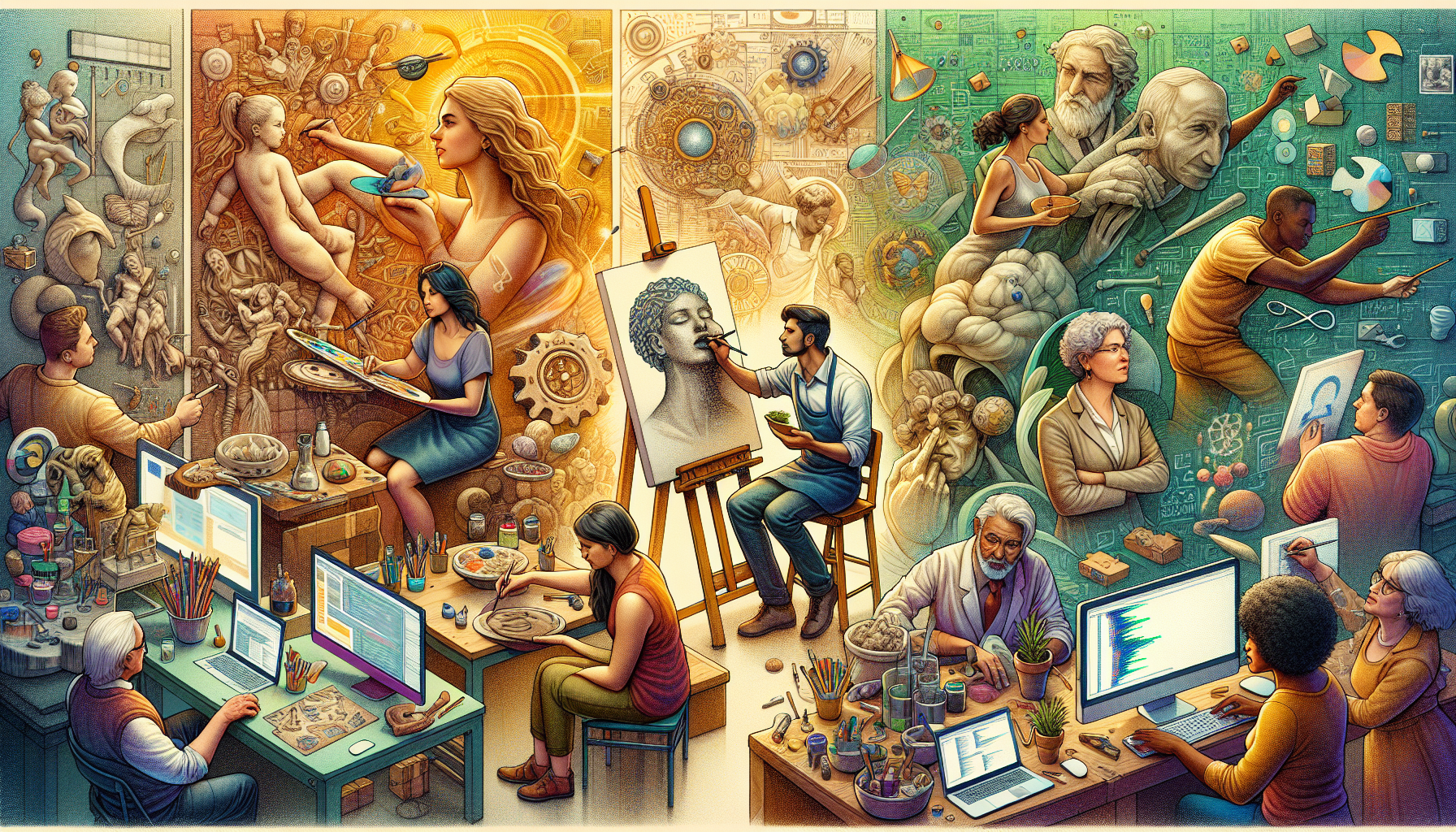Exploring the Unseen: Behind the Scenes of NASA's Diverse Career Paths

NASA employs thousands of professionals, many of whom work behind the scenes in critical roles that often go unnoticed. These positions are essential for the smooth operation of missions, the well-being of astronauts, and the effective communication of scientific ideas to the public.
Psychologists: The Mental Health Guardians
One of the most vital, yet often overlooked, roles at NASA is that of the psychologist. Space travel can be a mentally taxing experience due to the isolation, confinement, and stress that astronauts endure. Clinical psychologist Dr. Cady Coleman, a former astronaut, emphasizes the importance of mental health support in space exploration. She states, "We prepare astronauts not just for the technical challenges but also for the emotional and psychological hurdles they might face during long-duration missions." Psychologists work closely with astronauts before, during, and after missions to ensure they are mentally prepared to handle the rigors of space. Their expertise is particularly crucial for extended missions, such as those to the International Space Station (ISS), where astronauts can be away from family and the comforts of home for months at a time.
Educators: Inspiring Future Generations
Education specialists at NASA play a critical role in outreach and engagement with the public, particularly young students. They design programs that inspire students from diverse backgrounds to pursue careers in science, technology, engineering, and mathematics (STEM). The "NASA STEM Engagement" initiative, for example, offers a wealth of resources and workshops for educators to integrate space science into their classrooms. These specialists create materials that make complex scientific concepts accessible and engaging for young minds, effectively planting the seeds for future scientists and engineers. By sparking interest in STEM fields, they help cultivate the next generation of innovators who will continue the legacy of space exploration.
Artists and Communicators: Bridging Science and Society
Creative professionals at NASA are essential in translating scientific discoveries into compelling narratives for the public. Graphic designers, illustrators, and writers work together to craft the visual and textual content that accompanies missions. Stunning imagery produced by NASA's visual artists not only documents missions but also captivates the public's imagination, fostering a connection between space exploration and everyday life. Visual artist and designer Kelsey Young notes, "Our job is to make science beautiful and relatable. We want people to feel the wonder of space, just as we do." By bridging the gap between complex scientific concepts and public understanding, these artists and communicators play a vital role in garnering support for NASA's missions.
Data Analysts: Decoding Complex Information
In an increasingly data-driven world, data analysts at NASA are pivotal in interpreting the vast amounts of information collected from space missions. These professionals utilize statistical models and data visualization techniques to make sense of complex datasets, providing insights that guide decision-making. Data analyst Dr. John Smith explains, "Our work helps to ensure that the findings from missions are not just numbers on a page, but rather stories that can be used to inform future explorations." Their efforts make it possible for scientists and engineers to draw actionable conclusions from data, thereby enhancing the effectiveness of future missions and research endeavors.
Exploring the unseen roles at NASA reveals a vibrant tapestry of diverse careers that play a crucial role in the agency's success. From psychologists ensuring the mental well-being of astronauts to educators inspiring the next generation of space explorers, these professionals work alongside engineers and scientists to expand the boundaries of human knowledge and capability. As we continue to venture into the cosmos, it is essential to recognize and celebrate the myriad roles that support these extraordinary missions. By shining a light on these hidden careers, we can inspire a broader audience to consider the vast opportunities available within the realm of space exploration, reminding us that every role—no matter how behind the scenes—is vital to the quest for knowledge beyond our planet. In doing so, we not only honor the contributions of these professionals but also encourage a new generation to pursue careers that support the exploration of our universe, emphasizing that NASA is a collective effort where every career path leads to the stars.
Space Psychologist
NASA, private space exploration companies (e.g., SpaceX, Blue Origin)
Core Responsibilities
Conduct psychological assessments and provide counseling to astronauts before, during, and after missions.
Develop programs to prepare astronauts for the psychological challenges of long-duration space travel.
Collaborate with interdisciplinary teams to ensure astronauts’ mental health and well-being.
Required Skills
A Ph.D. in Clinical Psychology with specialization in space psychology or related fields.
Strong communication skills to facilitate open discussions about mental health.
Experience with crisis intervention and stress management techniques.
STEM Education Specialist
NASA, educational non-profits, museums, and science centers
Core Responsibilities
Design and implement educational programs and workshops that promote STEM education for students and teachers.
Collaborate with schools and organizations to create engaging curriculum materials related to space science.
Evaluate the effectiveness of educational initiatives and adapt them based on feedback and research.
Required Skills
A Master’s degree in Education, Science Education, or a related field.
Experience in curriculum development and instructional design.
Strong public speaking and interpersonal skills to effectively engage diverse groups.
Visual Communication Designer
NASA, design agencies specializing in science communication, freelance for educational institutions
Core Responsibilities
Create visually compelling graphics and illustrations to represent scientific discoveries and mission data.
Work with scientists and engineers to translate complex concepts into accessible visual narratives.
Develop promotional materials that engage the public and raise awareness of NASA’s missions.
Required Skills
A Bachelor’s degree in Graphic Design, Visual Communication, or a related field.
Proficiency in design software such as Adobe Creative Suite (Illustrator, Photoshop, InDesign).
A strong portfolio showcasing experience in scientific or educational illustration.
Data Visualization Analyst
NASA, research institutions, tech companies focusing on data analysis
Core Responsibilities
Analyze large datasets from space missions and present findings through visualizations that communicate results effectively.
Collaborate with scientists to develop dashboards and reports that support data-driven decision-making.
Employ statistical modeling to enhance the interpretation of complex data patterns.
Required Skills
A Bachelor’s or Master’s degree in Data Science, Statistics, or a related field.
Proficient in programming languages such as Python or R and data visualization tools like Tableau or D3.js.
Strong analytical skills with the ability to translate data into actionable insights.
Science Communication Strategist
NASA, scientific journals, non-profit organizations focused on science education
Core Responsibilities
Develop and execute communication strategies to effectively convey NASA’s research and missions to the public.
Create press releases, articles, and social media content that highlight scientific advancements and discoveries.
Engage with media outlets and coordinate press events during key mission milestones.
Required Skills
A Bachelor’s degree in Communications, Public Relations, or a related field.
Experience in science writing or communication within the scientific community.
Excellent writing, editing, and storytelling skills to make complex topics relatable.


